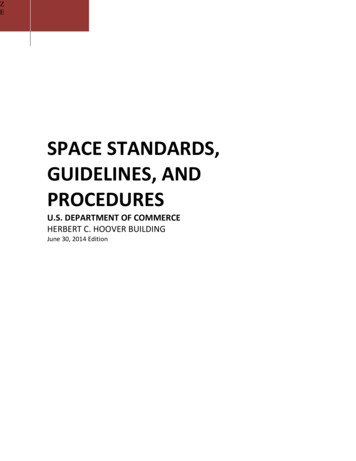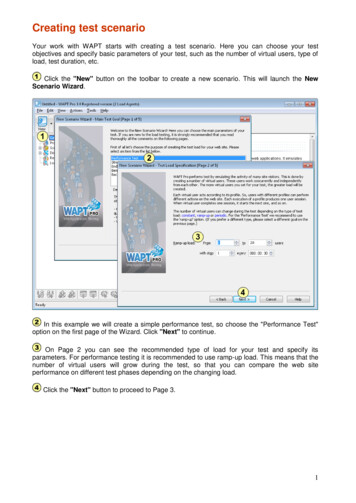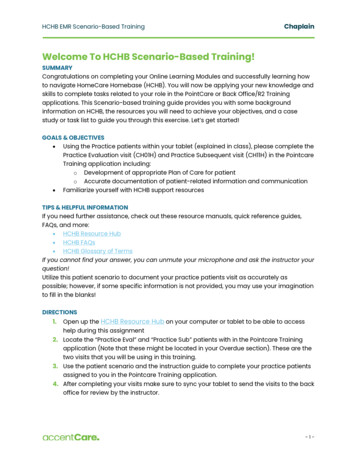
Transcription
HCHB EMR Scenario-Based TrainingChaplainWelcome To HCHB Scenario-Based Training!SUMMARYCongratulations on completing your Online Learning Modules and successfully learning howto navigate HomeCare Homebase (HCHB). You will now be applying your new knowledge andskills to complete tasks related to your role in the PointCare or Back Office/R2 Trainingapplications. This Scenario-based training guide provides you with some backgroundinformation on HCHB, the resources you will need to achieve your objectives, and a casestudy or task list to guide you through this exercise. Let’s get started!GOALS & OBJECTIVES Using the Practice patients within your tablet (explained in class), please complete thePractice Evaluation visit (CH01H) and Practice Subsequent visit (CH11H) in the PointcareTraining application including:o Development of appropriate Plan of Care for patiento Accurate documentation of patient-related information and communication Familiarize yourself with HCHB support resourcesTIPS & HELPFUL INFORMATIONIf you need further assistance, check out these resource manuals, quick reference guides,FAQs, and more: HCHB Resource Hub HCHB FAQs HCHB Glossary of TermsIf you cannot find your answer, you can unmute your microphone and ask the instructor yourquestion!Utilize this patient scenario to document your practice patients visit as accurately aspossible; however, if some specific information is not provided, you may use your imaginationto fill in the blanks!DIRECTIONS1.Open up the HCHB Resource Hub on your computer or tablet to be able to accesshelp during this assignment2. Locate the “Practice Eval” and “Practice Sub” patients with in the Pointcare Trainingapplication (Note that these might be located in your Overdue section). These are thetwo visits that you will be using in this training.3. Use the patient scenario and the instruction guide to complete your practice patientsassigned to you in the Pointcare Training application.4. After completing your visits make sure to sync your tablet to send the visits to the backoffice for review by the instructor.-1-
ChaplainHCHB EMR Scenario-Based TrainingCASE STUDY 1 – CHAPLAIN EVALUATION VISIT (CH01H)Action(s) thatoccurred prior toyour action item aredescribed in thiscolor box.Tips and resources are found inthis red text. If the text is boldand underlined, it’s a clickablelink to a relevant resource. Forexample, click to check out theHCHB Resource Hub!This blue boxsignifies a requiredaction in thePointCareapplication by you.Starting your Day and Gathering InformationA referral has beenreceived and theAdmissions Nurse hasadmitted the patientto hospice. An add-onEvaluation visit hasbeen requested.You performMAINTENANCE on thePointcare device andsync. You see theEvaluation visit(CH01H) has beenadded to yourschedule today.You speak with theCaregiver, confirmthe visit for todayand ACCEPT thevisit. You sync yourdevice again to letthe Back Officeknow you haveaccepted the visit.You reviewthe PatientInformation.Johnathan Bear is an 80-year-old man who presented to the hospital with exacerbation ofCongestive Heart Failure (CHF) and associated pneumonia. He has a history of pneumoniawith a permanent PEG tube as he failed previous swallow studies. His past medical historyincludes cardiac disease, Post-traumatic Stress Disorder (PTSD) and unspecified dementia.Currently, he does not have capacity to make decisions and he has been in the ICU for 3days. He is currently on 2 IV antibiotics for bacterial pneumonia which contributed to theexacerbation of his CHF and need for pain medication. Prior to discharge, his medications willbe reconciled, and he will take them orally.Right now, the Palliative Care physician in the ICU is consulting with Seasons. A Clinical Liaison(CL) is conferencing with Mr. Bear’s medical team and is in the process of setting up anInitiation visit to sign consents. His prognosis is 6 months or less. Given that Mr. Bear’sadvanced directive indicated his deceased husband Lewis as his proxy, the CL speaks withthe ICU social worker to set up a family care conference to discuss surrogacy as his daughter,Sarah, has been acting as the surrogate. However, there are no legal papers for this prior tothe info session/consents meeting.The CL, daughter Sarah, son Dennis, and Palliative Care physician have met in person. SonWyatt was able to ZOOM into the case conference for their father. The team discussed theprognosis with Mr. Bear‘s children and the surrogacy topic. Sarah and Wyatt areunderstanding of the disease progression and on board with hospice. Dennis, however, ishesitant and in shock of the news and now accuses his siblings of keeping information fromhim. Dennis expresses feelings of resentment and issues related to closure. Despite Dennis’2
HCHB EMR Scenario-Based TrainingChaplainposition on the situation, the family moves forward with hospice as they all agree that Sarahwill serve as the surrogate decision maker. A surrogacy designation form has been signed byWyatt and Dennis to indicate that they are in agreement with Sarah being the lead surrogate.Sarah and the CL sign consents that same morning, review the 4 hospice levels of care, andother related topics. Mr. Bear is being discharged home this afternoon. Having trouble locating this? Try reviewing the ‘Share the Story.’ To access this fromyour rolling calendar, tap the three-dot menu button in the upper right-hand corner.Tap ‘Medical Records’ and then tap your patient’s name. Then tap any visitunderneath your patient’s name. Under the History section, tap ‘Visit History’ to see alist of previous visits for this patient. Review the Admission SOC Visit and the InitiationVisit.Chaplain Evaluation Visit DocumentationWhen you arrive atthe patient’s home,the caregiverwelcomes you in.Tap ‘START’ on yourdevice to begin yourvisitRemember! Don’t tap STARTuntil you are welcomed into thepatient’s home.You are welcomed into Mr. Bear’s home and confirm patient’s identity. You sit down to talkwith Sarah about Mr. Bear and his hospice journey. Mr. Bear is alert and oriented to personand recognizes his family. Currently, Mr. Bear reports 4/10 pain though denies anxiety andnausea when asked. He is observed to be short of breath at times and you call and alert thehospice RN, Mary.You learn that Mr. Bear was married in 1961 to Louisa and they had three children: Dennis (age60), Sarah (age 58) and Wyatt (age 56). In 1979, Mr. Bear and his wife divorced, and he cameout as a gay man. In 2011, Mr. Bear remarried a man named Lewis, who died 5 months agofrom cardiac disease. Mr. Bear and Lewis met during a Navy Veterans event in 2003 andshared a lot of common interests. They entered into a relationship soon after.Further discussion with Sarah reveals that Dennis, though he lives close to his father, did nothandle his father’s coming out well and still holds on to feelings of anger and guiltsurrounding this and other unresolved family issues. He was unaware that his father is ill andas a result has not been involved with caring for his father nor being present for Lewis’ funeral.Wyatt has been out of the country for the last 2 years. Sarah has been supportive of her fatherand has been the primary caregiver as she is close by. Since Lewis died, she has been themain source of support for her father. Sarah moved in to live with her father a few monthsago after his condition worsened. Soon after, he required assistance with ADLS, becameincontinent and became more dyspneic on exertion.3
HCHB EMR Scenario-Based TrainingChaplainSarah shared that prior to this current hospitalization, Mr. Bear was in the hospital fordehydration, a hip surgery secondary to a fall and mental status changes secondary tountreated UTI and urosepsis. Mr. Bear does have a DNR in place, and a copy has been enteredinto his chart by the CL. Sarah shared that they had a meeting with the CL in the hospital andSarah will be the surrogate decision maker moving forward.You continue to talk with Sarah and have learned more about Mr. Bear. He is a Christian andenjoys classic rock music. He used to play the guitar when his children were younger, andWyatt became interested in music on a professional level. Mr. Bear and Lewis would attendchurch together but since Lewis’ death he has not been attending. Sarah tries to playsermons for him on YouTube, but he has seemed less interested lately. Since her father hasbeen ill, it has been hard to get him out of the house to attend church even though he wantsto.Sarah expressed feelings of fear related to the strain between Dennis and Mr. Bear, as shefeels both will have a hard time coping if they are not able to use their shared faith as a wayto come together. She fears Dennis will walk away from God or that her father won’t be ableto transition in peace if there continues to be turmoil with his son. Sarah goes on to share herown feelings of isolation. She shared that her faith has strengthened while caring for Mr. Bearand she has had many meaningful conversations with him that she has not been able tohave since the divorce.Throughout the Chaplain evaluation, Mr. Bear was in and out of a state of awareness,expressed minimal pain and some shortness of breath. You alerted the hospice RN Mary ofthis. Towards the end of the visit, Mr. Bear is somewhat alert and oriented to person but not totime or place. You supported Sarah as she explained to her father what was happening andlooked to get her father’s permission despite being the designated surrogate. After a fewconversations between Mr. Bear and Sarah, Sarah feels more at peace withthe families’ decision to begin hospice and accepting the services available to help her fathertransition. Sarah reports that she is still working on funeral home arrangements and willupdate the CH when she finalizes plans. In order to coordinate care, you contact SocialWorker Pedro to relay this information.Sarah decided she will engage Dennis and try to get his support despite their differences andhis hesitancy on hospice care for their father. Moments later, Sarah stepped away to attendto a personal phone call and you discussed home living arrangements and support availablein the home. Mr. Bear feels well taken care of at home by his daughter Sarah, denied anyfeelings of fear or feeling as though things are being done against his will. Enough information has been provided for you to complete the Physical Assessmentsection of your visit. As you document notice how each section (other than pathways,goals/interventions and new orders section) can be done in any order to facilitatenatural conversation instead of mechanical. Pathways, goals/intervention and neworders should be done in the specified order and after the rest of your documentationto paint the full picture.4
ChaplainHCHB EMR Scenario-Based Training Complete a Bereavement Risk Assessment on Sarah. If you need help on how to dothis, refer to number 3 on the HCHB Patient Experience Evaluation Visit Instructions.Ensure that the correct individual is checked to receive the CAHPS survey and that allappropriate individuals are checked for Bereavement Services.Complete the ‘Pathways’ and ‘Interventions/Goals’ section based on your assessmentof the above patient and family. If you need additional help on how to do this, refer tothis document.In the ‘New Orders’ section, add an Add an CH Subsequent Visit (CH11H) once aweekfor the entire cert period. Add in a CH PRN Visit (CHPRN on the first Saturday of thecertification period. See Patient Experience Orders-Calendar for help.For more information on the Suspected Abuse/Neglect, refer to company policies onabuse and neglect.Completing Your Visit and Signing OutIt is now time to complete your visitand sign out.See pages 126-130 of the Pointcare UserManual for detailed steps for completingthese tasks!Congratulations on completing the scenario-basedtraining for the Chaplain Evaluation Visit!5
ChaplainHCHB EMR Scenario-Based TrainingCASE STUDY 2 – CH Subsequent Visit (CH11H)Action(s) thatoccurred prior toyour action item aredescribed in thiscolor box.This blue boxsignifies a requiredaction in thePointCareapplication by you.Tips and resources are found inthis red text. If the text is boldand underlined, it’s a clickablelink to a relevant resource. Forexample, click to check out theHCHB Resource Hub!Starting your DayYou have arranged aSubsequent Visit withthe Bear family fortoday.You performMAINTENANCE onthe Pointcare deviceand sync. You seethe Subsequent visit(MU11H) is on yourschedule.You ACCEPT thevisit and sync yourdevice again to letthe Back Officeknow you haveaccepted the visit.You reviewthe PatientInformation.Chaplain Subsequent Visit DocumentationThe following week, you go to see Mr. Bear and Sarah again. Mr. Bear is alert and oriented toperson and place at this time and is reminiscing about his life in the Navy. At this time, Sarahshares funeral home information with you and you collaborate with SW Oliver to relay theupdated information. You offer a veteran pinning ceremony and Mr. Bear teared up as he hasnever been honored before. You facilitate this for the end of this week. You then alert the otherPatient Experience team members about the need for a veteran pinning ceremony visit thisweek and request a Veteran volunteer to be present.You discuss more about his goals and wishes and Mr. Bear really just wants to go to churchand play music. Mr. Bear shared how he has been down because he hasn’t been able to goout or see anyone from the VFW or from his church. You assess his mood further andcomplete a depression screen (PHQ-9 located within the Subsequent Documentation) andfinds that the patient is low risk for depression and not suicidal as he has coping mechanismsand support from his daughter, Sarah. Sarah expressed that sometimes she wishedeverything would just end. You complete another bereavement risk assessment and foundthat she is now high risk for bereavement and she has had suicidal thoughts. You thencomplete a depression screen/suicide risk assessment (found in the subsequentdocumentation) and found that Sarah is high risk for depression. You then attach a note andcomplete the Columbia Suicide Risk Assessment. From this assessment, you find that Sarah isa moderate suicide risk and complete the Stanley Brown Safety Plan template. Sarah begancrying and you offer verbal counseling.6
ChaplainHCHB EMR Scenario-Based TrainingYou call Dennis and leave a voice message to call back to set up a time to talk on the phoneor visit then alert the clinical team about the visit. Mr. Bear reported minimal pain throughoutthe visit and you alert the IDG team. Enough information has been provided for you to complete the Physical Assessmentsection of your visit, specifically: SNAP, Depression/Suicide Risk Basic Screening,Environment, Bereavement and DAROP. For help on how to do this, refer to the PatientExperience Subsequent Visit Workflow.Complete the ‘Interventions/Goals’ section based on your assessment of the abovepatient and family. If you need additional help on how to do this, refer to thisdocument.In the ‘New Orders’ section, create a care plan update order to add a new pathway. Itdoes not matter which new pathway you choose, you can add one based on what youfeel is appropriate. See Patient Experience Orders POC Update for reference.To attach the Columbia Suicide Risk Assessment, tap back in your visit until you get tothe Visit Action Page. From there, tap Notes and then tap ‘Add’. The note type is‘Comprehensive’.After completing your subsequent visit documentation and synching this back to theback office, go into the medical record for the patient and complete the Phone Callnote for your voicemail to Dennis. For help on how to do this, refer to the PatientExperience Phone Call Documentation.To complete a Volunteer request, tap back in your visit until you get to the Visit ActionPage. From there, tap Notes and then tap ‘Add’. The note type is ‘Volunteer ReferralForm’.To add the Funeral Home information, start at the Visit Actions screen. Then tap‘Medical Records’, and then tap ‘Demo graphics’. Then tap ‘Facilities’ to see a list offacilities associated with the patient’s care. To add a facility, tap ‘Edit’ and then tap‘Add’.”For the Stanley Brown Safety Plan template, refer to Protocol 2111c. Click here if youneed a refresher on the AC Suicide Protocol.Completing Your Visit and Signing OutIt is now time to complete your visitand sign out.See pages 126-130 of the Pointcare UserManual for detailed steps for completingthese tasks!Congratulations on completing the scenario-basedtraining for the CH Subsequent Visit!7
ChaplainHCHB EMR Scenario-Based TrainingHCHB UniverseBACK OFFICEPOINTCAREREFERRAL ENTRY(Intake)SASSync Address AUTHORIZATION / VERIFICATION(Finance)SyncSCHEDULING(Admission Coordinator)InitiationVisitsCLINICAL REVIEW(TD/AOC/RAHA):SOC WorkflowStep 1Step 2CODINGStep 3Step 4Step 5Verify Patient toAdmit andAdmissionLocationSCHEDULING(TA, HACoordinator,On-Call)RN Start of Care(SOC) VisitsEPISODE CARE DELIVERY SC/PE Evaluation Visits Subsequent VisitsPRN VisitsVolunteer VisitsContinuous Care Visits On-call VisitsRecertification VisitsIPC and GIP VisitsDeath & Discharge Visits Medical Record UpdatesQuality AssuranceREQUIREDAPPROVALS(TD/AOC/RAHA)8
ChaplainHCHB EMR Scenario-Based TrainingUNDERSTANDING SERVICE CODES (VISIT CODES)Before we get started, let’s look at how you can identify visits by the Service Codes (alsoreferred to as Visit Codes) in HCHB. The service codes begin with letters, which represent thediscipline. They are followed by numbers or letters that identify the type of visit, followed bythe letter H for Hospice. For example:Registered NurseRNHospice00H RN00H - RN Hospice Start of Care (SOC)Admission VisitBillable Admission with HIS DataCollectionCommon Discipline and Visit CodesDiscipline CodesDiscipline CodesATArt TherapyIHHospice Initiation VisitBCBereavementCoordinator00HHospice Billable Admission Visit with HISData CollectionCHChaplain01HEvaluation VisitHCCHospice Care Consultant11HSubsequent (Routine) VisitHSHospice Aide11HMT/CH/AT Phone Call visitMSMedical Social Worker09HSubsequent GIP SW VisitMUMusic TherapyNODANo One Dies Alone VisitPHYPhysician72HBereavement VisitsRNRegistered NursePRNAs Needed (PRN) VisitSNSkilled NurseIPInpatient (included in all IPC visits)VOLVolunteerHPVCVolunteer CoordinatorSocial Worker Phone Calls andBereavement Phone Calls*For full Service Code list, click here; for Patient Experience-specific codes, click here9
skills to complete tasks related to your role in the PointCare or Back Office/R2 Training applications. This Scenario-based training guide provides you with some background information on HCHB, the resources you will need to achieve your objectives, and a case study or task list to guide you through this exercise. Let's get started!
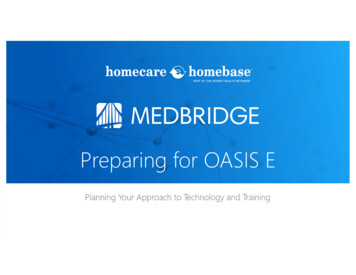


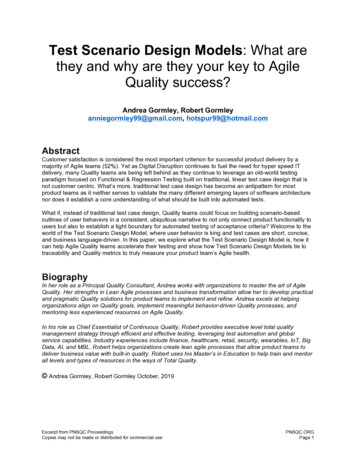

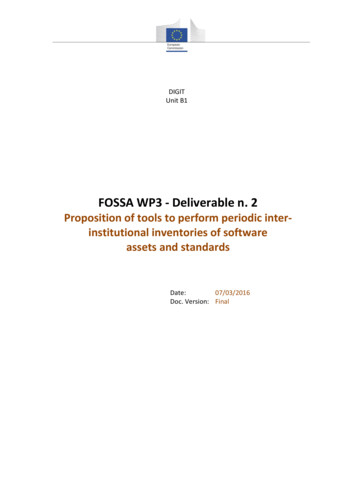
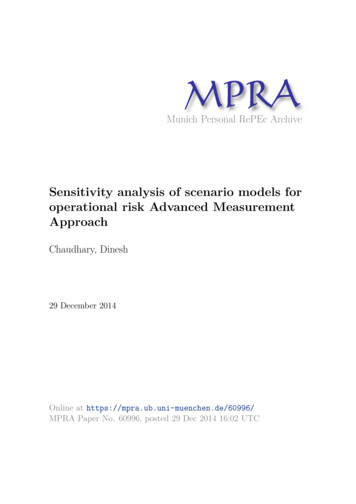

![Informatica Interview Questions and Answers [Scenario-Based]](/img/2/informatica-interview-questions-and-answers-scenario-based-1.jpg)
